At the University of Texas at Austin, your college experience extends far beyond the classroom. As a student in the School of Architecture, you have access to one of the most vibrant and well-resourced campuses in the country—with 1,200+ student organizations, 24 libraries and cultural centers, health services and wellness programs, and endless ways to get involved and stay inspired.
On the Forty Acres, you’ll find your people, explore your passions, and create your future.
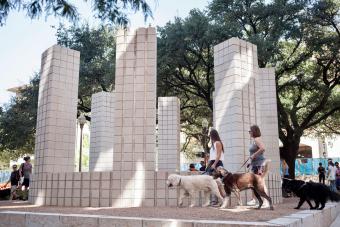
Arts & Culture
Art is everywhere at UT Austin—from student productions and pop-up galleries to major exhibitions and world-class performances. With dozens of venues, hundreds of performances, a thriving public art program, and a front-row seat to Austin’s creative scene, students have endless ways to explore and engage with the arts.
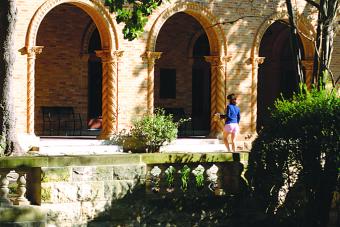
Housing & Dining
From residence halls to university apartments, UT Austin offers a variety of housing options to suit your lifestyle. With flexible meal plans and a range of dining locations across campus, students can enjoy both comfort and convenience in their daily routines.
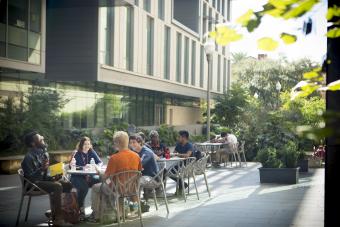
Health & Wellbeing
Students at UT Austin have access to on-campus medical care, mental health services, recovery support, fitness classes, and more—making it easy to stay well and feel supported throughout your college journey. The School of Architecture also has its own dedicated CARE Counselor, who is available to help with anything that might get in students' way.
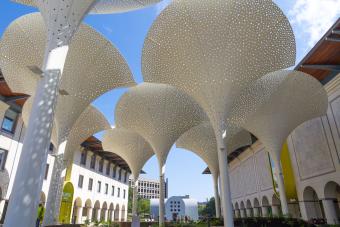
Campus Destinations
Campus is home to a remarkable collection of museums, cultural venues, and student-centered spaces. From the iconic Tower to the Blanton Museum of Art, the Texas Science & Natural History Museum to the Moody Center, every corner of campus offers a place to explore and connect.
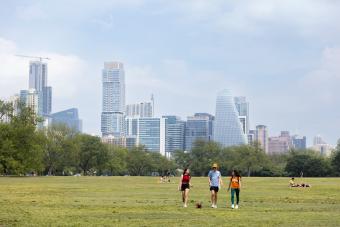
Life in Austin
With its mix of natural beauty, a booming creative scene, and a thriving economy, Austin offers an unmatched quality of life. For planning and design students, the city is an ideal living laboratory for conducting research, proposing design solutions, and working on real-world projects that contribute to the evolution of Texas’ capital city.
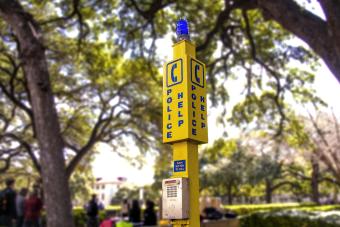
Safety & Security
UT Austin provides many programs, services, and resources for any student who needs support and assistance, from emergency response systems and safety escorts to crisis counseling and bystander intervention training.
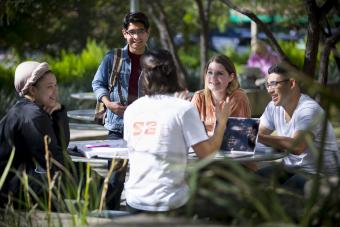
Student Involvement
With more than 1,000 student organizations, intramural and club sports teams, leadership opportunities, and campus-wide events, there’s no shortage of ways to get involved at UT Austin. Whether you’re planning concerts, embarking on outdoor adventure trips, joining student government, or writing for the student newspaper, there’s a community waiting for you here.
FOLLOW US
- Instagram Post
 @utsoa
@utsoaHappy holidays from UTSOA 🤍
Instagram Post @utsoa
@utsoaHead to the 🔗 in our bio to learn more about Rad & De's projects!
Instagram Post @utsoa
@utsoaThat's how it's done 👏 👏 👏
.
.
.
.
.
.
.
.
Congratulations to our students on their successful Final Reviews! Whether it was your first review, last or somewhere in the middle - we're so proud of all your effort & innovation this semester.Instagram Post @utsoa
@utsoaPlotting our next move ❌⭕️ enjoy a well-deserved break and come back ready to finish the semester strong!
Instagram Post @utsoa
@utsoaAdmiring the views 🍂 🌆
Architecture student Stella Stambaugh traveled from UT Austin to Oslo, Norway to work with @spinnarkitekter as part of @utsoaprp.
Instagram Post @utsoa
@utsoaNestled in central-southern Mexico lies the Tehuacán-Cuicatlán Valley, one of the world’s most remarkable biodiversity hotspots and a landscape deeply connected to the origins of Mesoamerica.
Instagram Post @utsoa
@utsoa@miroriveraarch gives the environmental and cultural contexts of each of their projects the utmost respect.
Instagram Post @utsoa
@utsoaSymposium scenes 🍃
.
.
.
.
.
.
Organized by UTSOA faculty:
Ria Bravo - @riabravodesign
Tara Dudley - @tdudleyphd
Nerea Feliz - @feliz_nerea
Allison Gaskins - @allisonhgaskins
Clay Odom - @studiomodo
Igor Siddiqui - @isssstudioInstagram Post @utsoa
@utsoaSymposium scenes 🍃
.
.
.
.
.
.
Organized by UTSOA faculty:
Ria Bravo - @riabravodesign
Tara Dudley - @tdudleyphd
Nerea Feliz - @feliz_nerea
Allison Gaskins - @allisonhgaskins
Clay Odom - @studiomodo
Igor Siddiqui - @isssstudio

